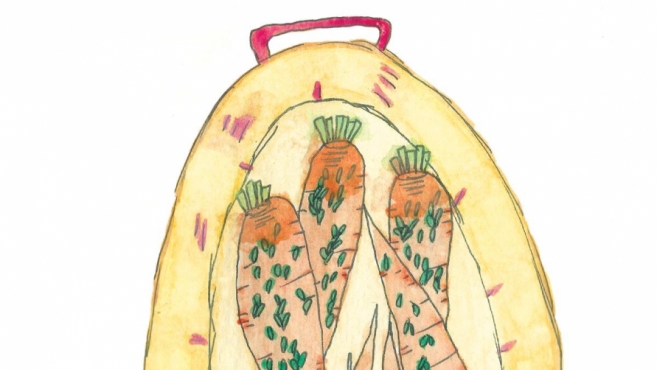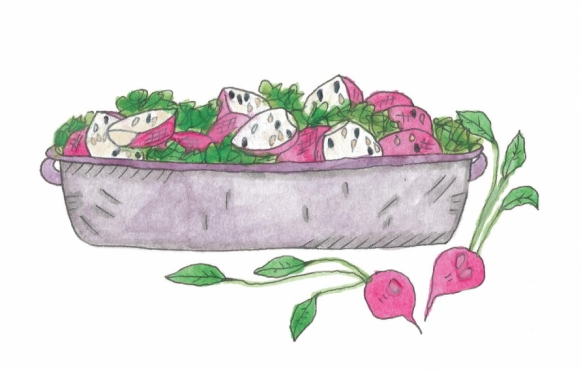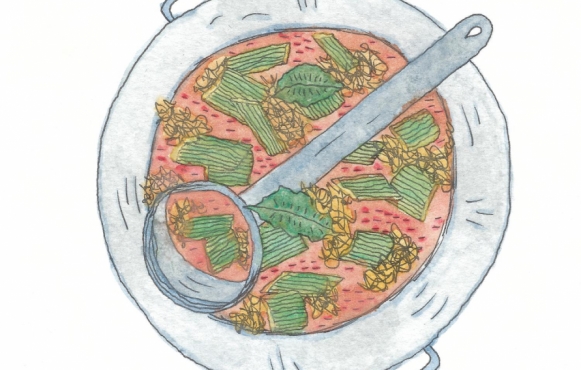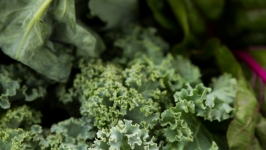From Crudité to Entrée
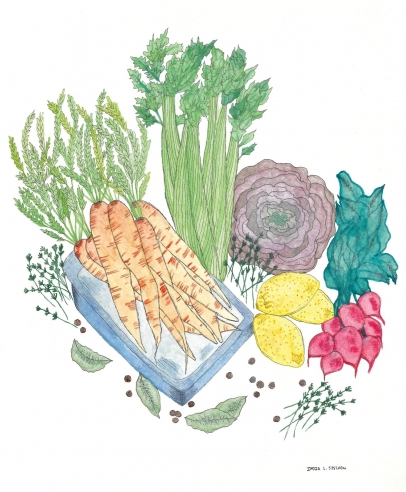
Unexpected recipes for everyday vegetables
Food fads come and go as quickly as fashion fads these days, powered by the internet and mobile technology. Few of these trends influence how we eat at home, however. While we may choose to bake galaxy cupcakes for a party or experiment with another culture’s flavor profiles or ingredients, it’s unlikely either of these things will impact the way we cook for ourselves and our loved ones. Over the last decade, only one trend has functioned more like a measurable and lasting shift, successfully wending its way into the collective food consciousness, and that is how we think about, treat and eat vegetables.
Root-to-stem cooking is the here and now, and since its merits include increased nutrition and flavor as well as decreased waste, well, root-to-stem is likely here to stay. Additionally, cooking vegetables as if they were meat — roasting, braising, grilling and so on — is also a relatively new advent, the result of which I couldn’t be more thrilled about. Examine the cooking habits of the preceding five decades, and you’ll find that Americans were predominately preparing and eating vegetables three ways: raw, boiled or steamed.
Some consider the concept of root-to-stem and the application of new cooking methods a side effect of the farm-to-table movement, or an outcropping of the increasingly popular flexitarian diet, and neither of those would be entirely wrong. Certainly, both pushed evidence of our changing relationship with vegetables onto the pages of mainstream cooking magazines and television shows. But it's my opinion that the impetus of this sea change can be credited to two chefs, operating on different continents separated by an ocean.
In 2008, Londoner Yotam Ottolenghi, a Jerusalem-born meat-eater, published the first of several cookbooks with a focus on vegetables. He and his business partners’ vegetable-leaning “deli” counters had taken the UK by storm. By featuring heaping platters of brightly colored and boldly flavored vegetables prepared with Ottolenghi’s unique culinary point of view, this young chef changed the beliefs many Brits had about produce. Using a combination of spices and cooking techniques borrowed from Syria, Turkey, Lebanon, Iran and Israel filtered through a Western sensibility, Ottolenghi created an approachable but adventurous cuisine, striking in both its approach and flavor. By 2015, the chef had five cookbooks under his belt, a regular column in The Guardian, and dozens of awards from globally-respected organizations.
On the other side of the world, in a vegetarian restaurant attached to a Napa, California yoga studio, meat-eating chef Jeremy Fox made a name for himself in a manner that influenced chefs across the U.S. Named one of Food & Wine’s Best New Chefs in 2008, the man behind Ubuntu used fascinating cooking techniques, global flavors, and unusual combinations of ingredients to veritably transform the way many born and bred California chefs thought about and interpreted the abundance of fresh produce delivered to their kitchen doors each day. Fox now works as the executive chef of Rustic Canyon in Santa Monica and is author of one of this year’s top-selling cookbooks among home cooks and restaurant professionals, On Vegetables: Modern Recipes for the Home Kitchen.
In the recipes accompanying this piece, we’ve taken inspiration from Ottolenghi and Fox, creating simple and delicious dishes out of vegetables shortchanged by our country’s eating and cooking habits for several generations. Foods typically reserved for raw consumption by the average American, via relish tray or salad, are being reinvented (or at least reconsidered) by chefs everywhere these days, and we’re following suit by relying on some classic and not-so-classic techniques. Suffice it to say, in this issue of Edible Western NY, radishes, carrots, celery and lettuce are all getting a makeover!
If you love this idea or are curious about the vegetable revolution, be sure to examine cookbooks by both Ottolenghi and Fox. Additionally, Lucky Peach’s Peter Meehan penned an equally forward-thinking vegetable cookbook called Power Vegetables! in late 2016 I think you’ll also enjoy. Happy cooking!


